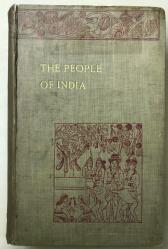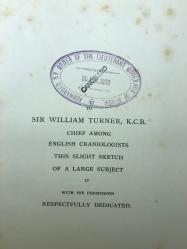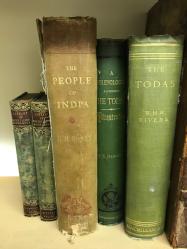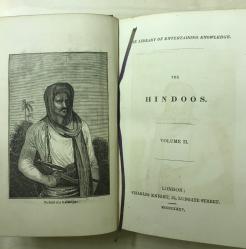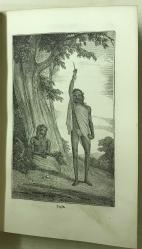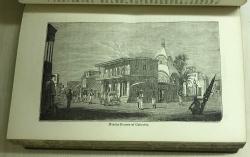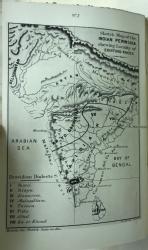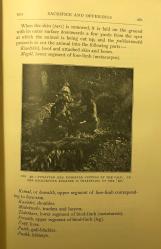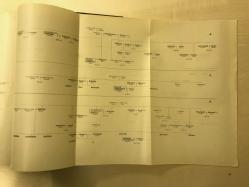Week 8: Printing the People of India
Seminar Questions
- To what extent did Herbert Risley ‘invent’ the notion of caste?
- What was the relationship between race, caste and nationalism in India?
- What role did Indians play in the theory and practice of anthropology?
- How did printed images shape notions of caste and race in India?
Seminar Readings
** Risley, Herbert, The People of India (Calcutta, 1908), v-vi, 1-60, plates I-XXIV
* Dirks, Nicholas, ‘Castes of Mind’, Representations, 37 (1992)
Additional Readings
Primary
Dalton, Edward, Descriptive Ethnology of Bengal (Calcutta, 1872)
Forbes, John and John Kaye, The People of India (London, 1868-1875), 8 vols
Iyer, Ananthkrishna, Cochin Tribes and Castes (Madras, 1909)
Marshall, William Elliot, A Phrenologist Amongst the Todas (London, 1873)
Rivers, William Halse Rivers, The Todas (London, 1906)
Roy, Sarat Chandra, The Bihors (Ranchi, 1925)
Secondary
Anderson, Clare, Legible Bodies: Race, Criminality and Colonialism in South Asia (Oxford, 2004)
Ballantyne, Tony, Orientalism and Race: Aryanism in the British Empire (Basingstoke, 2001)
Bayly, Susan, Caste, Society and Politics in India from the Eighteenth Century to the Modern Age (Cambridge, 1999).
Cohn, Bernard, ‘The Census, Social Structure and Objectification in South Asia’, in Bernard Cohn (ed.), An Anthropologist among the Historians and Other Essays (Delhi, 1987)
Cohn, Bernard, Colonialism and Its Forms of Knowledge: The British in India (Princeton, NJ, 1996)
Dirks, Nicholas, Castes of Mind: Colonialism and the Making of Modern India (Princeton, NJ, 2001)
Edwards, Elizabeth (ed.), Anthropology and Photography, 1860-1920 (New Haven, CT, 1992)
Fuller, Chris, ‘Anthropologists and Viceroys: Colonial Knowledge and Policy Making in India, 1871–1911’, Modern Asian Studies, 50 (2016)
Hudson, Nicholas, ‘From ‘Nation’ to ‘Race’: The Origin of Racial Classification in Eighteenth-Century Thought’, Eighteenth-Century Studies, 29 (1996)
Jenkins, Laura, ‘Another ‘People of India’ Project: Colonial and National Anthropology’, The Journal of Asian Studies, 62 (2003)
Kapila, Shruti, ‘Race Matters: Orientalism and Religion, India and Beyond c. 1770–1880’, Modern Asian Studies, 41 (2007)
Pinney, Christopher, Camera Indica: The Social Life of Indian Photographs (London, 1997)
Robb, Peter (ed.), The Concept of Race in South Asia (Oxford,1995)
Said, Edward, Orientalism (London, 1978)
Wagner, Kim, ‘Confessions of a Skull: Phrenology and Colonial Knowledge in Early Nineteenth-Century India’, History Workshop Journal, 69 (2010).
Seminar Handout
Seminar Powerpoint
Seminar Books
Binding (edition binding), for Risley, The People of India (Calcutta, 1908)
Mark of ownership, printed stamp indicating copy was sent to Lt. Gov-General of India, Andrew Henderson Leith Fraser.
Examples of different formats and bindings of anthropological books on India. (L to R): The Hindoos (1835), 2 vols., The People of India (1908), A Phrenologist Amongst the Todas (1873), The Todas (1901).
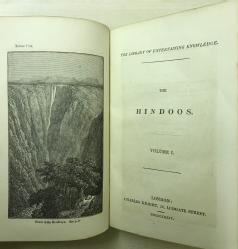
Title page and frontispiece (wood engraving) to The Hindoos (London, 1835), vol. 1.
Title page and frontispiece (wood engraving) to The Hindoos (London, 1835), vol. 2.
Wood engraving from The Hindoos (London, 1835).
Wood engraving from The Hindoos (London, 1835).
Wood engraving from The Hindoos (London, 1835).
Map from Marshall, A Phrenologist Amongst the Todas (London, 1873).
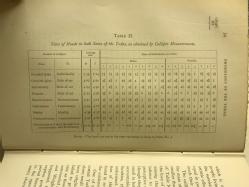 Table of measurements from Marshall, A Phrenologist Amongst the Todas (London, 1873).
Table of measurements from Marshall, A Phrenologist Amongst the Todas (London, 1873).
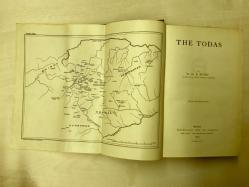 Map from Rivers, The Todas (London, 1901).
Map from Rivers, The Todas (London, 1901).
Photograph (photolithograph) from Rivers, The Todas (London, 1901).

